From the Chicago Reader (November 1, 1992). Too bad that this hasn’t been made widely available either online or on disc–although I’ve just discovered that a Swedish DVD exists (see below). I much prefer it to Sontag’s previous feature, Duet for Cannibals, which recently came out in both formats. — J.R.
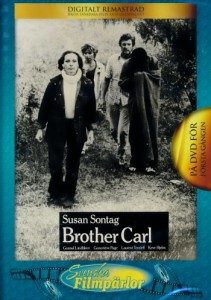
Susan Sontag’s seldom-seen second feature — filmed in Sweden like her first (Duet for Cannibals) but in English and with a cast of Swedish and French actors — shows the influence of Bergman’s Persona, Dreyer’s Ordet, and Whale’s Frankenstein as it depicts two tortured relationships, a suicide, and a miracle. The major characters include an unhappily married couple, a mainly mute former dancer (Laurent Terzieff) who occasionally suggests Nijinsky, and an autistic child. The results can’t exactly be called the work of a natural filmmaker, but they’re fascinating for anyone interested in following the themes and formal concerns of Sontag’s fiction as well as some of her essays, including “On Silence”. This is no masterpiece, but it certainly deserves more attention than it’s received (1971). (JR)
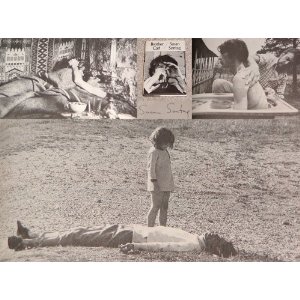 Read more
Read more
Gary Groth of Fantagraphics Books commissioned me to write this Introduction to the first volume of Charles Schulz’s Sunday color strips of Peanuts, covering the early 1950s, which was published in November 2013. — J.R.
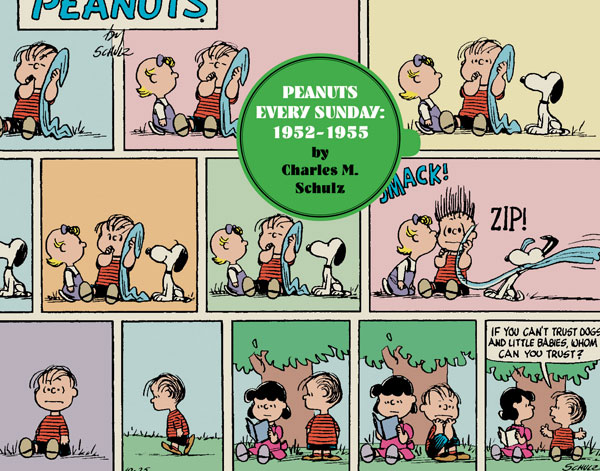
“…I’ve made a lot of mistakes down through the years doing things I
never should have done. But fortunately, in a comic strip, yesterday
doesn’t mean anything. The only thing that matters is today and tomorrow.”
— Charles Schultz to Gary Groth (“At 3 O’clock in the Morning,”
Comics Journal #200, December 1997)
It was one thing to read Sunday color Peanuts comic strips from 1952 to 1955 at the rate of one per week, when they came out — and not only because they would have wound up in the trash like the rest of the Sunday paper, long before my brothers and I went to sleep that night. And it’s quite another thing to read them all today, piled together in the present volume, one after the other, seven or eight panels at a time, as if they’re the successive chapters of an ongoing serial — or maybe just the latest portions of an endless white picket fence that stretches towards some version of infinity or eternity (or at least roughly half a century of dependable continuity, in any case). Read more
Published in the Spanish newspaper El mundo as “El maverick impredecible” on May 1, 2015. — J.R.


Having some historical perspective on changing fashions in film taste is never easy, but it becomes necessary if one is to understand the fluctuating meanings of the career of Orson Welles. Just as one needs to recall a time in the early 20th century when the crime serials of Louis Feuillade such as Fantomas and Les Vampires were regarded with utter scorn by sophisticated cinephiles, and a time in the mid-20th century when Alfred Hitchcock was still considered an entertainer but not an artist, we have to consider that during the half-century constituting the career of Orson Welles, his audience swerved repeatedly back and forth between regarding him as a mainstream star and viewing him as an esoteric artist. Although the tendency to see him as a maverick has been constant, the issue of where he belongs as a maverick has never been entirely resolved.
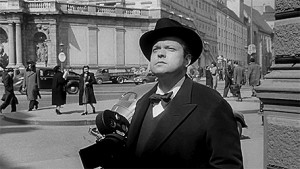
Even before Citizen Kane, when at age 23 he appeared on the cover of Time magazine (1938) for his work in theater and as a radio actor, and shortly before he began a weekly radio series of his own, he already had the profile of a boy genius full of imagination and mischief, a reputation that was only enhanced about half a year later when he fooled part of his radio audience into believing, through an unorthodox adaptation of H.G. Read more
From the Chicago Reader (November 7, 2003). — J.R.
Elephant
**** (Masterpiece)
Directed and written by Gus Van Sant
With Alex Frost, Eric Deulen, John Robinson, Elias McConnell, Jordan Taylor, Carrie Finklea, Nicole George, Brittany Mountain, Bennie Dixon, Nathan Tyson, Alicia Miles, Kristen Hicks, Timothy Bottoms, and Matt Malloy.

Gus Van Sant’s startling and brilliant Elephant — a film that follows the activities of several high school students before and during a massacre like the one at Columbine — has its flaws, yet its virtues so outshine them that the years he’s spent lost in the wilderness can be forgiven. His four previous features weren’t exactly dead on arrival, though his 1998 remake of Psycho came alarmingly close. But the filmmaker responsible for such fresh early shorts as The Discipline of DE (1978) and My New Friend (1987) and such exciting early features as Mala Noche (1985), Drugstore Cowboy (1989), and My Own Private Idaho (1990) was almost nowhere in evidence in Good Will Hunting (1997), Psycho, or Finding Forrester (2000) and only faintly discernible in the experimental feature Gerry (2001). (In between were two satirical features, the uneven 1993 Even Cowgirls Get the Blues and the more successful 1995 To Die For.) Read more
Okay, even though I’ve refused to place The Artist on any of my lists of end-of-the-year favorites, I’ve just finished reseeing it, and I have to admit that if I were a member of the Academy and could offer write-ins, Uggie the dog would be somewhere near the top.
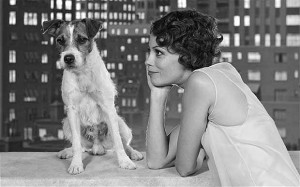
Let’s be frank: we all have different thresholds when it comes to shameless bids for our affection, and these thresholds are invariably matters of taste. While I haven’t been able to forgive The Artist for pilfering and then brandishing a sizable chunk of Bernard Herrmann’s Vertigo score near its closing stretches to impart a sense of tragedy — even after I’ve forgiven Michel Hazanavicius for all his other outrageous breaches of period and silent movie syntax (in short, his diverse and mutifaceted ahistorical outrages), not to mention his abject appropriations of diverse narrative chunks from Singin’ in the Rain, A Star is Born, and Citizen Kane — I’m still periodically won over by some of his audiovisual ideas as acts of audacity and stylistic flourishes in their own right.
Above all, I’m flabbergasted by the performance of Uggie the dog, mutt extraordinaire, which has got to be one of the best canine turns in the history of cinema. Read more
From the Chicago Reader (December 1, 1987). — J.R.
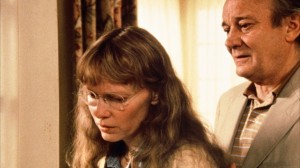
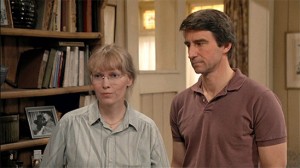
Woody Allen’s worst film and second pure noncomedy — a desperate low-energy recycling operation — features four (or, arguably, five) cases of unrequited love among six characters stagebound in a New England summer house for about 18 hours: a suicidal depressive (Mia Farrow), loved by both her flamboyant mother (Elaine Stritch) and a middle-aged widower (Denholm Elliott), loves only an unfulfilled writer (Sam Waterston), who loves only the suicidal depressive’s best friend (Dianne Wiest), who doesn’t know who or what she wants. To add a little contrast, the mother is happily married to a physicist (Jack Warden), but just to make sure that we don’t jump to any wrong conclusions about this, the latter imparts to us the helpful wisdom that the meaninglessness of the universe is more depressing than the threat of nuclear annihilation (perhaps the key to Woody’s no-sweat politics). Wiest remarks at another point that she’s married to a radiologist, but she won’t let him x-ray her because she doesn’t want him to know what’s inside her. Most of the writing is on this glib and wretched level, and the laws of diminishing returns and what James Agee once called rigor artis set in with a stultifying vengeance. Read more
From The Soho News (April 8, 1981). I haven’t reproduced all of this column, preferring to consign most of the latter part of it to oblivion. — J.R.

My dream scenario runs roughly like this: J. D. Salinger finally relents and allows Jerry Lewis to direct a film based on The Catcher in the Rye (“Salinger’s sister told me if anyone would get it from him it would be me,” Lewis remarked in a 1977 interview), and civilization as we know it collapses. In the ensuing sociocultural upheaval occasioned by this deconstruction of two critical reputations, anarchy reigns supreme: mad dogs roam the street, The New Yorker shrivels to a cinder out of acute, well-mannered embarrassment; and all those distinguished gray eminences in my profession who fear and loathe Lewis for what he says about their own bodies and social discomforts — some of whom shrink in terror from Tati for the same reasons — run screaming off to the Hamptons and Berkshires to write their own fiction, never to return.
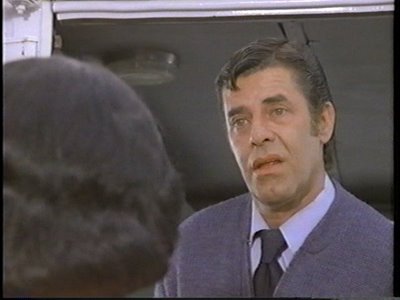
As long as such a personal fulfillment fails to materialize, I guess you might say I’m hardly working. So is the cinema today, at least the kind I care about. Read more
Françoise Romand’s Mix-up is surely one of the greatest films I’ve ever reviewed, and I can happily report that it’s become available in recent years on DVD (which isn’t to say that it isn’t still grossly neglected); you can even find it on Amazon in the U.S. This article appeared in the February 26, 1988 issue of the Chicago Reader, and eventually it led to my becoming friends with Romand. — J.R.
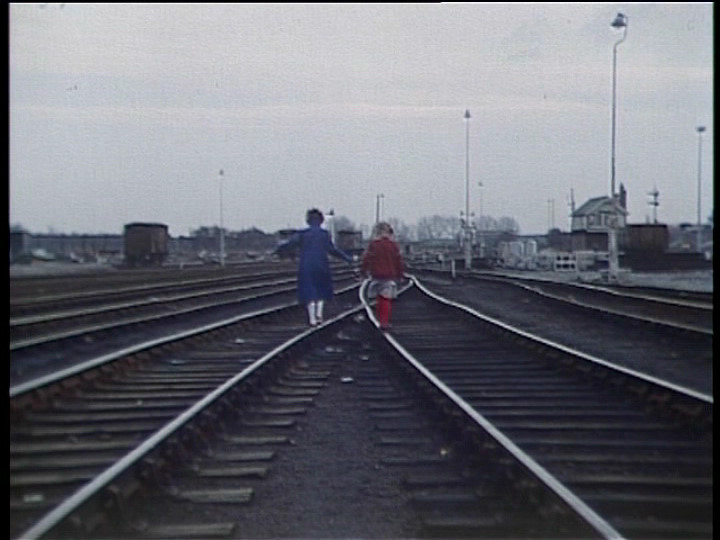
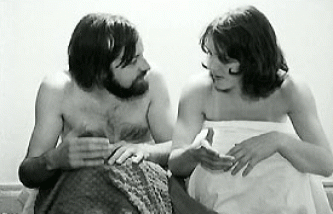

MIX-UP
**** (Masterpiece)
Directed by Françoise Romand.
ANATOMY OF A RELATIONSHIP
*** (A must-see)
Directed and written by Luc Moullet and Antonietta Pizzorno
With Moullet and Christine Hébert.
GAP-TOOTHED WOMEN
* (Has redeeming facet)
Directed by Les Blank.
While the issue of representation is at the cutting edge of most debates about film, it usually gets posed in relation to fiction features; documentaries, ranging from Shoah to the evening news, are commonly exempted. The unspoken assumption that nonfictional form is a discardable, see-through candy wrapper — a means of organizing and containing information, which can safely be ignored once we get to the goodies inside — not only keeps us ideologically innocent but limits the kinds of content we may find permissible in documentaries.
Many valuable documentaries, of course, exist chiefly to let certain voices be heard that might otherwise remain silent: Carole Langer’s Radium City, about a radioactive town in Illinois, is one such example, and Deborah Shaffer’s powerful account of the Sandinista struggle, Fire From the Mountain (which is playing this week at Facets), is another. Read more
This is excerpted from my “Paris-London Journal” in the November-December 1974 Film Comment, written in August when I was starting work at the British Film Institute after living for five years in Paris.
I can’t recall now whether it was this review or my inclusion of Cockfighter on my ten-best list in Sight and Sound — or could it have been both? — that led eventually to Charles Willeford sending me a note of thanks, along with his a copy of his self-published book A Guide for the Undehemorrhoided, a short account of his own hemorrhoid operation. Not knowing Willeford’s work at the time — today I’m a big fan, especially of his four late Hoke Mosley novels — I’m sorry to say that I didn’t keep this book, which undoubtedly has become a very scarce collector’s item.
But first, before reprinting the Film Comment review, here is my capsule review of Cockfighter for the Chicago Reader, written almost three decades later and published in mid-August 2003: “Except for Iguana, which is almost completely unknown, this wry 1974 feature is probably the most underrated work by Monte Hellman (Two-Lane Blacktop). Read more
This is the first ten-best round-up I ever did for the Chicago Reader, which ran in their January 8, 1988 issue. Having recently been reading the Library of America’s mammoth collection of Manny Farber’s film criticism (which is coming out in September), I’ve become especially aware of how much one’s taste and preferences tend to change over time. Today, for instance, I suspect I would have placed Mélo in the number #1 slot, and probably wouldn’t include House of Games or Universal Hotel/Universal Citizen in the also-rans but would move them both up to the main list. The first photo, incidentally, directly below, is from Godard’s still woefully neglected King Lear.––J.R.

What is the meaning of a ten best list? For me, at any rate, it means a list of movies with the highest possible mystery quotient — the movies that fascinate me the most because they still have secrets to withhold. And the best litmus test that I know for determining this quality is repeat viewings. If a movie that knocked me out seems less mysterious after a return visit — as was the case with Broadcast News, Cross My Heart, and Orphans — then it doesn’t belong on the list. Read more
From The Movie, Chapter 108, 1982. -– J.R.


The earliest principles of editing shots together were perhaps no more simple or complex than those of bricklaying; they served, at any rate, to perform the same sort of basic architectural function. In an early narrative film by Georges Méliès, Le Voyage dans la lune (1902, A Trip to the Moon), elaborately staged tableaux in front of a stationary camera — the filmmaker himself called them ‘artificially arranged scenes’ — succeed one another through the medium of dissolves. A bevy of chorus girls waves goodbye to a rocket ship fired from a cannon (one tableau), the moon is seen approaching (another tableau, effected through a moving, artificial moon rather than a moving camera), and the rocket ship lands splat in the eye of the Man in the Moon (still another tableau). By the time Méliès was making Le Tunnel sous la Manche ou le Cauchemar Franco-Anglais (l907, Tunneling the English Channel), five years later, his visual structures were more complex, so that an entire narrative could proceed in the form of individual split-screen diptychs. In each of them, an Englishman and Frenchman attempt to cross the channel towards each other from opposite sides of the screen. Read more
From the Chicago Reader (January 3, 1992). A 2020 postscript to my remarks on For the Boys has been added. — J.R.

Looking at the big-time U.S. studio releases of 1991 — most of which enjoyed free supplements to their hefty advertising budgets from every branch of the media — we’d have to conclude that this was a year without enduring masterpieces. The best are intelligent entertainments, most of which faded quickly from memory. If I had to choose the ten best from this group, they’d be (in alphabetical order): Barton Fink, Beauty and the Beast, Bugsy, Defending Your Life, The Fisher King, For the Boys, Jungle Fever, Once Around, Rambling Rose, and Thelma and Louise. Equally good or even better are some new American pictures that didn’t get anything like the same national attention: Chameleon Street, City of Hope, The Deadman (only 37 minutes long, but better than most features I saw), Hangin’ With the Homeboys, A Little Stiff, My Own Private Idaho, Poison, Reunion, and Trust. The best American documentaries that come to mind are Butoh: Body at the Edge of Crisis, Inside Life Outside, Lines of Fire, Paris Is Burning, Private Conversations on the Set of Death of a Salesman, Sex, Drugs, Rock & Roll, and the videos of Sadie Benning. Read more
An alternate version of my essay on the Costa film, written in May 2020 for Trafic. — J.R.

It isn’t necessary to have seen anything else by Pedro Costa before encountering his title heroine in a film of her own, but if you saw his previous feature, Horse Money, you’ve already met her—a striking, angry middle-aged woman from Cape Verde who finally found the money to fly to Lisbon to join her long-absent husband, only to discover that she just missed his funeral. Settling into his rickety, crumbling house and trying to come to terms with her grief, keeping company mainly with a semi-mad priest (Costa regular Ventura), she’s precisely the kind of person that the world and movies tend to ignore and evade, yet Costa’s epic portraiture, beautifully lit and framed so that it builds an exalted altar to her, invites us to luxuriate in her hushed presence. Audiences tend to have an easier time with this dark reverie than critics because it takes us somewhere very special and respects us far too much to tell us why.
How to explain the appeal of a movie named after a real person, a displaced “non-professional” who is also its star? Read more
From the Chicago Reader (May 1, 1990). — J.R.

The four films to date of independent Chicago filmmaker Peter Thompson form two diptychs: not films to be shown simultaneously side-by-side, but successive works whose meanings partially arise out of their intricate inner rhymes and interactions. Two Portraits (1982), which has already had limited exposure in Chicago, describes the filmmaker’s parents: Anything Else, devoted to his late father, combines stop-frame images of the latter, in an airport and outdoors, with a painful recording of his voice taken in a hospital and a multifaceted verbal portrait delivered by his son; Shooting Scripts juxtaposes the filmmaker’s mother, Betty Thompson, reading from her own diaries with a minimalist view of her sleeping on a beach chair, alternating stop-frames with privileged moments of movement. Together these films create a rich tapestry, but the more recent hour-long pair, Universal Hotel and Universal Citizen (1987), receiving its premiere here, creates a still more ambitious and dense interweaving of objective and subjective elements. As Thompson puts it, this diptych deals with three main themes: the emotional thawing of men by women, the struggle to disengage remembrance from historical anonymity, and nonrecoverable loss. In the first film, Thompson describes his involved research about medical experiments in deep cold conducted on a Polish prisoner and a German prostitute by Dr. Read more
It’s infuriating to keep hearing people smugly and narcissistically remark on TV about what a “historic” period we’re currently living through. Presumably this is in sharp contrast to their (i.e., our) less significant predecessors. Yet truthfully, what these people really seem to mean by “historical” is “hysterical”. [12/18/20] Read more























